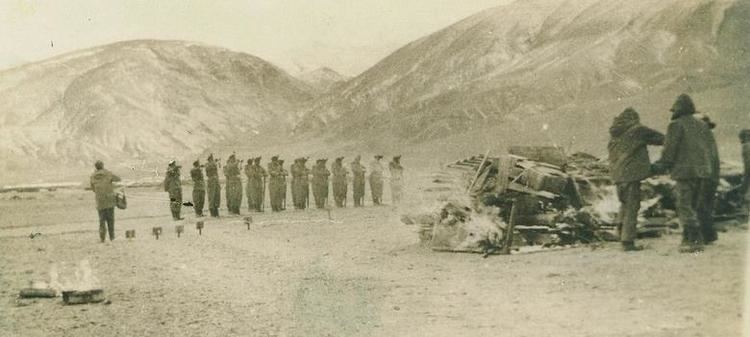 | ||
Rezang la war 1962 ahir dham
Rezang La is a mountain pass on the south-eastern approach to Chushul Valley in Ladakh, in the state of Jammu and Kashmir in India. It is 3,000 yards long and 2,000 yards wide, with an average height of 16,000 feet. La means a mountain pass in Tibetan language.
Contents
- Rezang la war 1962 ahir dham
- The great escape episode 4 rezang la
- 1962 battle
- Military action
- Memorial
- References
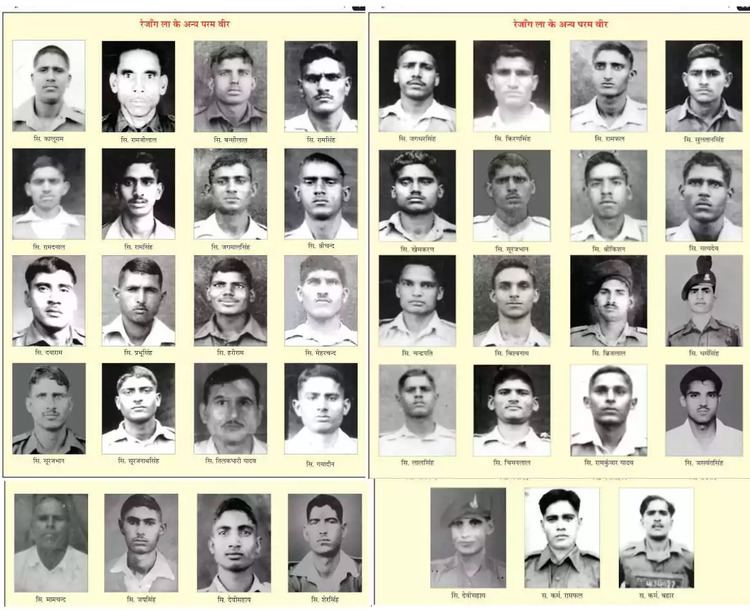
If Ladakh is a part of this country today(is it or isn't it?), it is because of the Veer Ahirs who fought to the 'last man, last round' at Rezang La (Chushul) on November 18, 1962. This battle is listed in the 8 stories of collective bravery published by the UNESCO (United Nations Educational, Scientific and Cultural Organization).
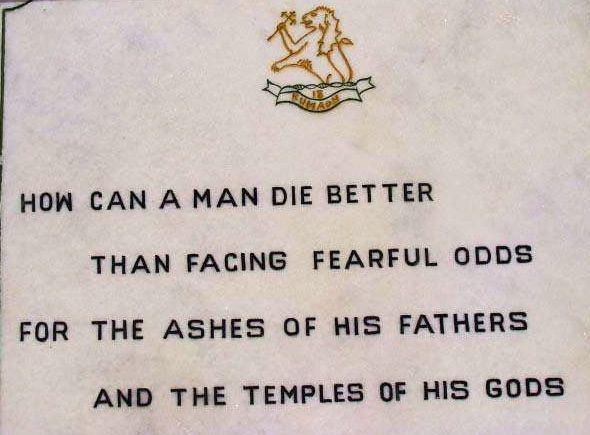
The great escape episode 4 rezang la
1962 battle
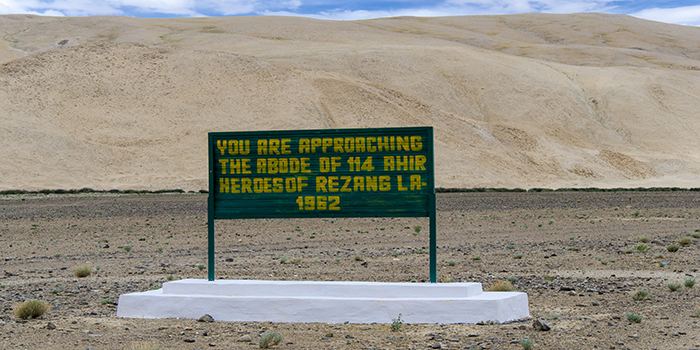
Rezang La was the site of the last stand of the 13 Kumaon, during the Sino-Indian War in 1962. The company led by Major Shaitan Singh, who won a posthumous Param Vir Chakra for his actions. From the Indian point of view, Rezang La had the drawback that an intervening feature blocked artillery operation, so that the Indian infantry had to do without artillery cover.

In this action on 18 November 1962, 114 Indian soldiers out of a total of 123 were killed. A memorial in Rewari, where most of the Ahir soldiers came from, claims that 1,300 Chinese soldiers were killed in the battle. The Indian side was led by Major Shaitan Singh (IC 7990), who was later awarded the Param Vir Chakra, India’s highest gallantry award for conspicuous bravery or self-sacrifice in the face of the enemy.
Military action
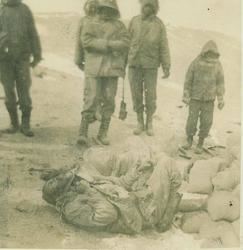
In the 1962 Sino-Indian War, the 'Ahir' Company of the 13th Kumaon battalion, almost all of whose soldiers were Yadavs from Rewari in Haryana and Alwar in Rajasthan (Ahirwal Area), led by Major Shaitan Singh, held this crucial position at Rezang La, a pass on the south-eastern approach to Chushul Valley in Ladakh, in the state of Jammu and Kashmir, at a height of 5,000 metres (16,404 feet). The company area was defended by three platoon positions and the surrounding terrain isolated it from the rest of the battalion. The expected Chinese attack on Rezang La came on 18 November in the morning. It was the end of a very cold winter night, with light snow falling. The icy winds howling through Rezang La were biting and benumbing. More than the thin air and cold, the location of Rezang La had a more serious drawback. It was crested to Indian artillery because of an intervening feature, which meant that they had to make without the protective comfort of the big guns. In the dim light of the morning, the Chinese were seen advancing through nullahs to attack No.7 and No.8 platoon positions.

The Indian Army troops fell on their prepared positions to face the Chinese offensive. At 05:00 when the visibility improved, both platoons opened up on the advancing Chinese with rifles, light machine guns, grenades and mortars. Indian artillery could, however, not be used. The nullahs were littered with dead bodies. The survivors took position behind boulders and the dead bodies. The Chinese, though they failed the first frontal attack, were not discouraged. They subjected the Indian positions to intense artillery and mortar fire at about 05:40. Soon, about 350 Chinese troops commenced advance through the nullahs. This time, No.9 Platoon, which held fire till the enemy was within 90 metres opened up with all weapons in their possession. Within minutes, the nullahs were again full of dead bodies, mainly of the Chinese.
Unsuccessful in frontal attack, the enemy, approximately 400 strong, then attacked from the rear of the company position. They simultaneously opened intense medium machine gun fire on No.8 Platoon. This attack was contained at the barbed wire fencing of the post.The Chinese then resorted to heavy artillery and mortar shelling. An assault group of 120 Chinese also charged No.7 Platoon position from the rear. However, Indian Army 3-inch mortar killed many of them. When 20 survivors charged the post, about a dozen Kumaonis rushed out of their trenches to engage them in hand-to-hand combat. Meanwhile, the Chinese brought up fresh reinforcements. The encirclement of No.7 Platoon was now complete. The platoon, however, fought valiantly till there was no survivor. No.8 Platoon also fought bravely to the last round.
Maj. Singh displayed exemplary leadership and courage in the battle of Rezang La. By all accounts, he led his troops most admirably. Unmindful of his personal safety, he moved from one platoon post to another and encouraged his men to fight. While moving among the posts he was seriously wounded by a sniping Chinese MMG, but he continued to fight along with his men. While he was being evacuated by two of his comrades, the Chinese brought heavy machine gun fire on them. Singh sensed danger to their lives and ordered them to leave him. They placed him behind a boulder on the slopes of a hill, where he died, still gripping his weapon.
The Chinese announced a unilateral ceasefire on 21 November 1962.
In this action, 114 Ahirs out of a total of 123 were killed. Of the 9 were severely injured. A memorial in Rewari claims that 1,300 Chinese soldiers were killed in the battle. After the war was over, the body of Singh was found at the same place, dead from the bullet wound and the freezing cold. It was flown to Jodhpur and cremated with full military honours. Singh was awarded Param Vir Chakra, the highest wartime gallantry medal, posthumously, for his leadership and devotion to duty.
Memorial
There is a small memorial at Rezang La, the soul-stirring inscription on which reads:
How can a man die better, Than facing fearful odds, For the ashes of his fathers, And temples of his gods.Fragment quoted from Horatius, a poem by Lord Thomas Babington Macaulay, member of Governor-General of India's Supreme Council from 1834 to 1838
